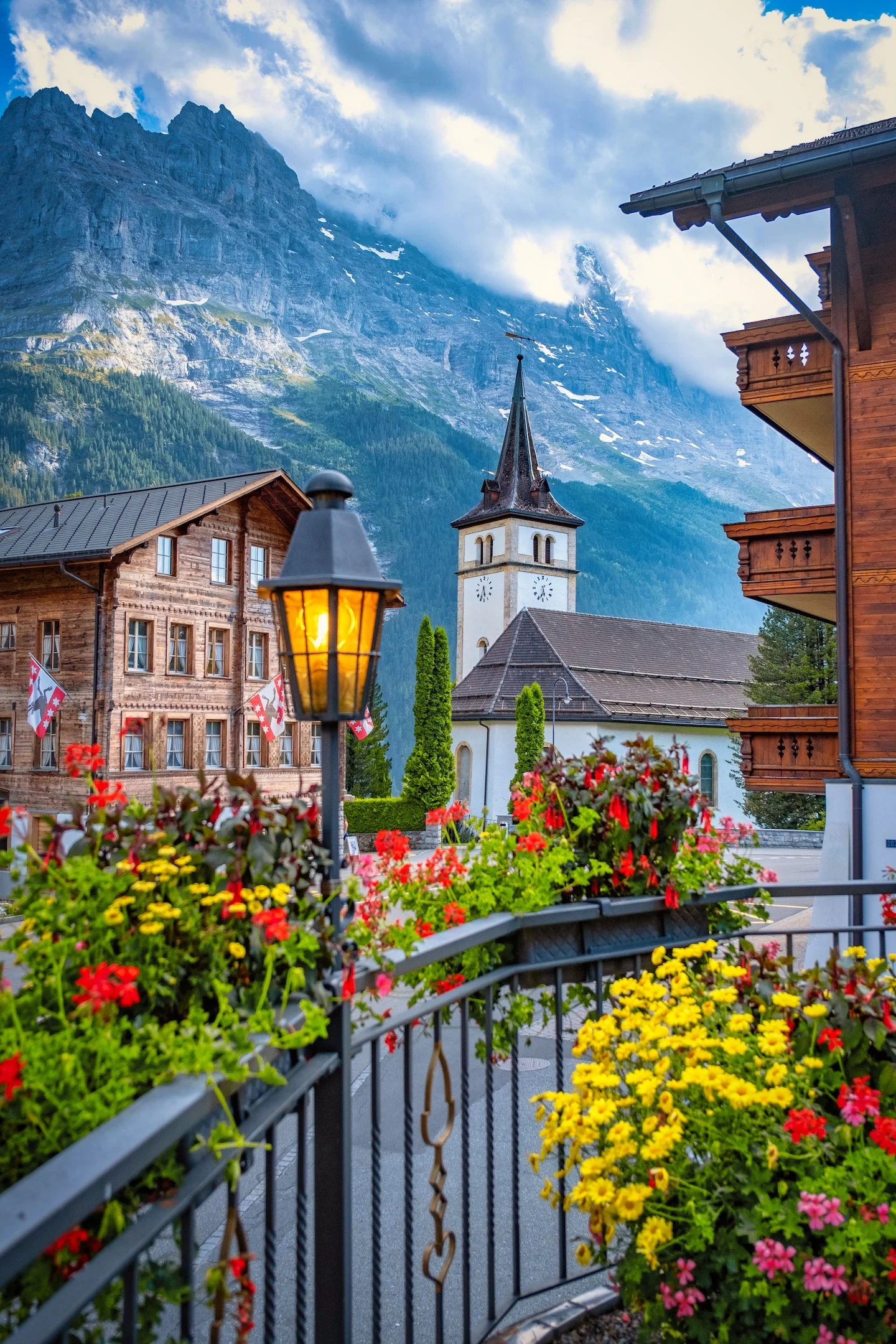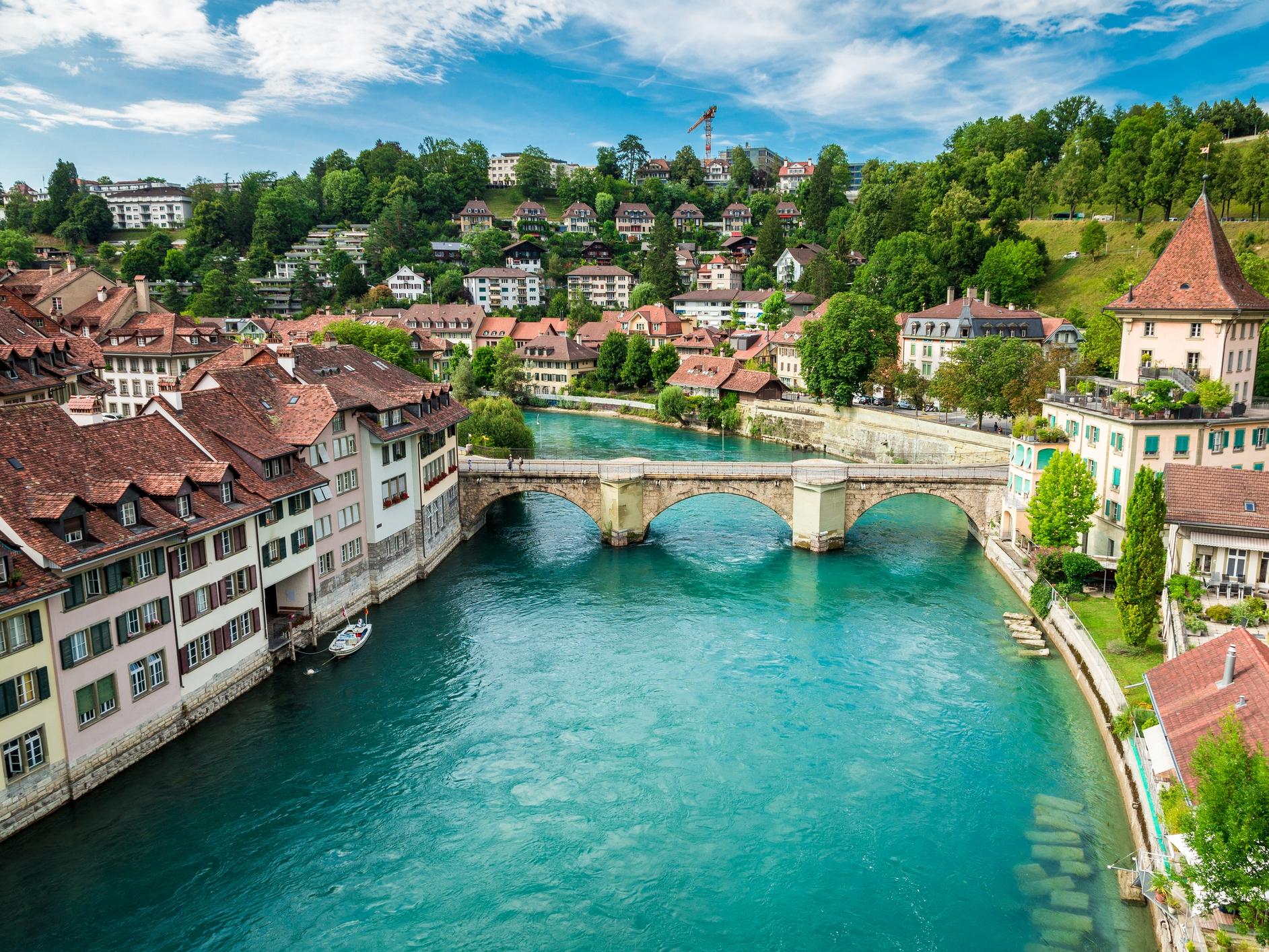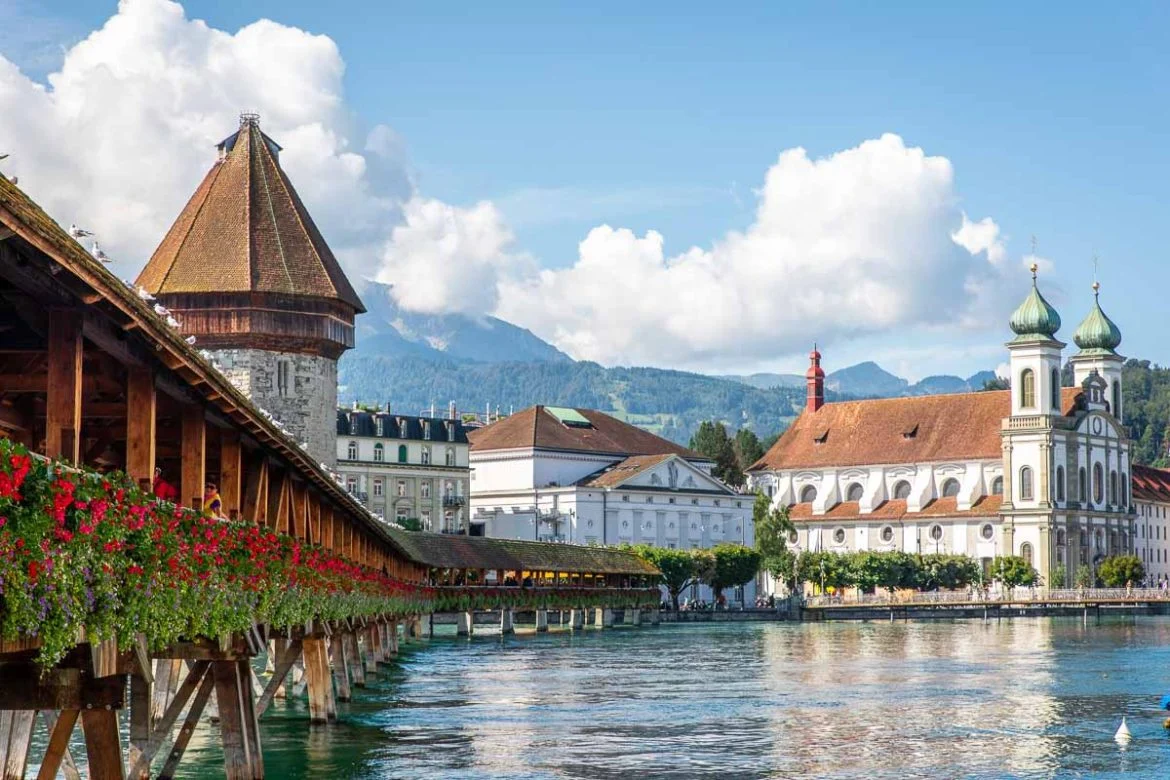
Why Switzerland?
Reasons to Visit Switzerland
Hiking Experience Unlike Any Other There are two reasons why the hiking industry is so prominent in Switzerland. Firstly, it’s the Alpine countryside, which deserves its own spot on the list. The endless array of hiking trails offer a sheer number of eye-captivating landscapes that can be found all throughout Switzerland, no matter where you look. Grand snowcapped Alp mountains, lush spreads of dense pine tree forests, calm rivers that mimic the sky in their hue, all create a scenery right out of a kid’s dream. Secondly, the majority of the hiking trails are well maintained, especially those that lay their path in close proximity to the marvelous Alps. If you are unsure of how to start off your list of things to do in Switzerland, then we suggest that you get to know the flora and fauna of the country that peacefully lives there by going for a hike!
Grindelwald Village - Fairytale Land on Earth Many travelers to Switzerland find themselves discovering Grindelwald Village only after they’ve returned from their trip. Don’t let this happen to you! This iconic place would be a great reason why visit Switzerland for the second time. Imagine a village from a fairytale, surrounded by a forest of all shades of green and the Bernese Alps that cover the village from the Northside. When the winter rolls around and the village is covered by a light dusting of snow, it obtains a new beautiful setting, which can be seen in some of the Star Wars and James Bond films. If the accommodations aren’t already fully booked, then you can even stay there to experience the magic of the village firsthand.
Swiss Art Galleries Art in Switzerland is treated with the utmost respect and is cherished, as it is a mirror into the past through which ancestors’ lives and culture can be understood. Although Switzerland lacks in the quantity of its own art, it makes up for in a broad range of museums with collections of art from every corner of Europe, each specializing in a particular time period, be it contemporary, modern, or abstract. As for Swiss art, a lot of it revolves around folk art: poetry, wood carvings, embroidery, and music which involves the yodel, a type of singing with rapid alternation between high falsetto and low chest notes.
Train Rides Like Nowhere Else With the countless number of scenic views that are out in the open, it is improbable that you will have time to visit all of them on your first trip to Switzerland. Or is it? Switzerland’s brilliant public transportation facility has cable cars and trains that run through the most astonishing parts of the country that could not be accessible by foot. So take a scenic train ride that runs in between two mountains and get a glimpse at nature from a new angle. Use the opportunity to delve into photography or take a photo on your phone. It’s worth a story post for sure! All the trains, just like Swiss watches, are incredibly punctual and arrive precisely on time, so planning your journey around the country by train is going to be not only a spectacular adventure, but one where you will always be on time.
Places
My favorite places in Switzerland

Bern
Bern's Old City The Old City, a UNESCO World Heritage Site, is the heart of Bern. Its arcades do not only protect us from the rain and the sun, they also house a plethora of unique shops and stylish boutiques. One special feature of the Old City are the bars and restaurants in the vaulted cellars – in the past, the sandstone cellars were used to store supplies, now they’re filled with hip beer bars, ateliers, or second-hand shops.
Need to known
Kunstmuseum Bern The museum holds over 3,000 paintings and sculptures and approximately 48,000 drawings, prints, photographs, videos and films. Works from Pablo Picasso, Paul Klee, Ferdinand Hodler and Meret Oppenheim have given Bern‘s art museum a world-class reputation. The collection comprises art from the Italian Trecento (Duccio, Fra Angelico), Swiss art since the 15th century (Niklaus Manuel, Albert Anker, Ferdinand Hodler, Cuno Amiet), international painting from the 19th and early 20th centuries (Impressionism, Cubism, Expressionism, Blauer Reiter, Surrealism), with particular focus on Paul Klee, Wassily Kandinsky and Pablo Picasso. Both national art trends (Meret Oppenheim, Franz Gertsch, Markus Raetz) and international ones from Jackson Pollock to the present are also represented.

Lauterbrunnen
Lauterbrunnen is situated in one of the most impressive trough valleys in the Alps, between gigantic rock faces and mountain peaks. With its 72 thundering waterfalls, secluded valleys, colourful alpine meadows and lonely mountain inns, the Lauterbrunnen Valley is one of the biggest nature conservation areas in Switzerland.
Need to known
The very name ‘Lauter Brunnen’ (‘many fountains’) suggests the magnificence of this landscape. There are 72 waterfalls in the Lauterbrunnen Valley, the most famous being the Staubbach Falls. Plunging almost 300 metres from an overhanging rock face, they are one of the highest free-falling waterfalls in Europe. In 1779, Johann Wolfgang von Goethe visited the valley, and was inspired by the roaring waters to write his well-known poem ‘Spirit song over the waters’ Another deafening natural phenomenon are the Trümmelbach Falls in the ‘Black Monk’ mountain, hidden behind mighty rock faces. Up to 20,000 litres of water per second cascade over the ten glacier falls from a total height of about 200 metres. This spectacle can only be reached in summer by tunnel lift.

Luzern
Over rolling fields to Willisau, along tiny, idyllic peat ponds to the tourist attractions of Luzern. On via Küssnacht am Rigi to Brunnen, sometimes on panoramic paths high above the lake, sometimes taking bend after bend around the lake.
Need to known
Peaceful Pfaffnertal is shaped by farming. Then follows a stamina-sapping up and down section, efforts compensated by wonderful views in Bellevue. After old tractors in the Burgrain Farming Museum, enjoy the sweet, hard Willisauer Ringli biscuits in the town. Along protected ponds in Ostergau to Ruswil, Switzerland’s largest farming municipality. Over the Brunau mountain ridge to Emmenbrücke, Luzern’s multi-culti agglomeration. After visiting the Kapellbrücke (Chapel Bridge), lakeside promenade or Verkehrshaus (Transport Museum) in Luzern’s seething tourist pool, the perspiration-producing route climbs again; picture-postcard views of the lake and Rigi. Küssnacht was once a port on the old Gotthard route, the «Hohle Gasse» from the Tell legend is not far off the route. Then a twisting panoramic stretch along the Vierwaldstättersee to climate-cosseted Gersau, where palms and chestnut trees give a southern feel. But the town of Brunnen, historic old Switzerland and the Gotthard await.
"